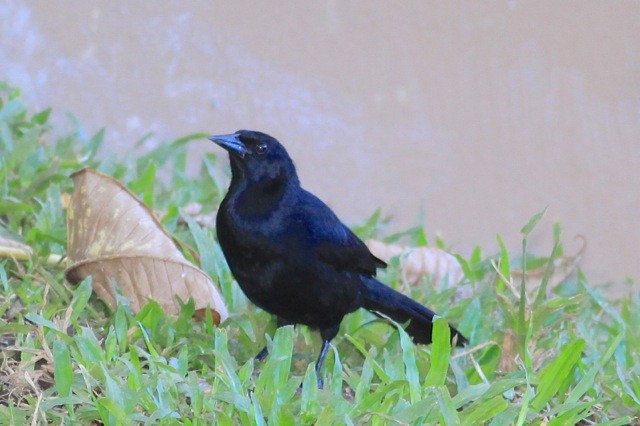Melodious Blackbird
A species of Melodious and Scrub Blackbirds Scientific name : Dives dives Genus : Melodious and Scrub Blackbirds
Melodious Blackbird, A species of Melodious and Scrub Blackbirds
Botanical name: Dives dives
Genus: Melodious and Scrub Blackbirds
Content
Description General Info
Description
The adult is a medium-sized blackbird with a rounded tail. The male is 25.5 cm (10.0 in) long and weighs 108 g (3.8 oz). The slightly smaller female is 23 cm (9.1 in) long and weighs 95 g (3.4 oz). The adult plumage is entirely black with a bluish gloss, and the bill, legs and feet are also black. The iris is brown. Females are identically plumaged to the males; young birds are brownish black and lack iridescence. There are no subspecies. 
Size
23 - 25 cm
Nest Placement
Tree
Feeding Habits
Melodious Blackbird exhibits a diverse omnivorous diet, consuming insects, fruits, seeds, nectar, and arthropods. Melodious Blackbird also feeds on ticks and parasites from cattle, showcasing unique foraging behaviors that benefit both the bird and livestock.
Habitat
The habitat of melodious Blackbird typically includes open pine woodlands, particularly those dominated by native species such as Pinus caribaea and Pinus oocarpa. These birds are also found in forest clearings, shrubby areas along riverbanks, and human-altered landscapes such as coffee plantations and pastures dotted with trees. In addition, melodious Blackbird can adapt to urban environments, often occupying parks, gardens, and towns. They are prevalent in lowland regions and can be found at elevations up to 2000 meters.
Dite type
Omnivorous
General Info
Feeding Habits
Bird food type
Distribution Area
D. dives is a resident breeder from coastal eastern and south-eastern Mexico to Costa Rica. Its range is expanding. El Salvador was colonized in the 1950s, and eastern Guatemala in the 1960s. Prior to 1989 there was only one Costa Rican record, but it is now easily seen at least as far south as San José, and it is expected to colonize Panama. The melodious blackbird inhabits a wide range of habitats, but avoids dense forest and thick undergrowth. It has adapted to human habitation and can be seen in gardens and on lawns. The melodious blackbird forages mainly on the ground for insects but will also take nectar and ripening maize ears as well as other plants, such as the fruits of the gumbo-limbo (Bursera simaruba) and Trophis racemosa. 
Species Status
Not globally threatened.
